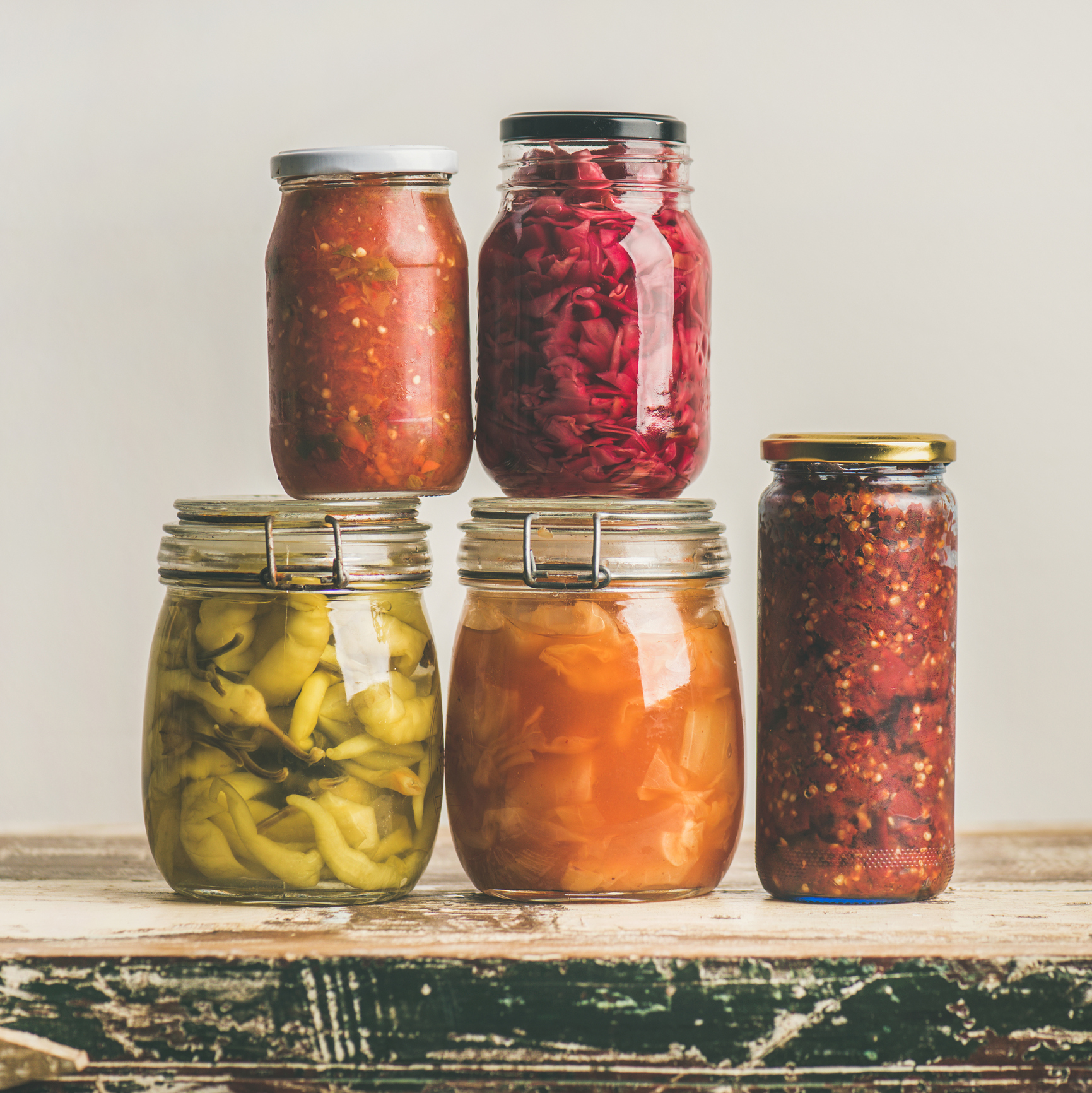Beer is fermented grains;
Wine is fermented grapes;
Sake is fermented rice.
https://www.health.harvard.edu/blog/fermented-foods-for-better-gut-health-2018051613841
Posted May 16, 2018, 10:30 am

Fermented foods are preserved using an age-old process that not only boosts the food’s shelf life and nutritional value, but can give your body a dose of healthy probiotics, which are live microorganisms crucial to healthy digestion, says Dr. David S. Ludwig, a professor of nutrition at the Harvard School of Public Health.
Not all fermented foods are created equal
The foods that give your body beneficial probiotics are those fermented using natural processes and containing probiotics. Live cultures are found in not only yogurt and a yogurt-like drink called kefir, but also in Korean pickled vegetables called kimchi, sauerkraut, and in some pickles. The jars of pickles you can buy off the shelf at the supermarket are sometimes pickled using vinegar and not the natural fermentation process using live organisms, which means they don’t contain probiotics. To ensure the fermented foods you choose do contain probiotics, look for the words “naturally fermented” on the label, and when you open the jar look for telltale bubbles in the liquid, which signal that live organisms are inside the jar, says Dr. Ludwig.Try making your own naturally fermented foods
Below is a recipe from the book Always Delicious by Dr. Ludwig and Dawn Ludwig that can help get you started.Spicy pickled vegetables (escabeche)
These spicy pickles are reminiscent of the Mediterranean and Latin American culinary technique known as escabeche. This recipe leaves out the sugar. Traditionally, the larger vegetables would be lightly cooked before pickling, but we prefer to use a quick fermentation method and leave the vegetables a bit crisp instead.
- 2 cups filtered water
- 1 to 1-1/4 tablespoons sea salt
- 2 tablespoons apple cider vinegar
- 1 jalapeño or a few small hot chiles (or to taste), sliced
- 1 large carrot cut into 1/4-inch-thick rounds or diagonal slices
- 1 to 2 cups chopped cauliflower or small cauliflower florets
- 3 small stalks celery (use only small inner stalks from the heart), cut into 1-inch-long sticks
- 1 bay leaf
- 1 cabbage leaf, rinsed
Set a quart-size canning jar in the sink and fill it with boiling water to sterilize. Empty the jar and tightly pack the vegetables and bay leaf inside to within 1 to 2 inches from the top of the jar. Pour the brine over the vegetables to fill the jar to within 1 inch from the top. Wedge the cabbage leaf over the top of the vegetables and tuck it around the edges to hold the vegetables beneath the liquid.
Set jar on the counter and cover with a fermentation lid. (Alternatively, use a standard lid and loosen it a bit each day for the first few days, then every other day, to allow gasses to escape.) Let pickle for three to five days, depending on the indoor temperature. Check the taste after a couple of days, using clean utensils. Vegetables will pickle faster in warmer climates. Make sure the vegetables stay packed beneath the level of the liquid and add salted water (2 teaspoons sea salt dissolved in 1 cup warm filtered water) as needed.
When the vegetables are pickled to your liking, seal the jar with a regular lid and refrigerate. Vegetables will continue to slowly pickle in the refrigerator. They will keep for about one month. Taste for saltiness before serving and, if desired, rinse gently to remove excess salt.
Calories: 1 (per 1 tablespoon)
Carbohydrate: 0 g
Protein: 0 g
Fat: 0 g
Excerpted from the book Always Delicious by David S. Ludwig, MD, PhD, and Dawn Ludwig. Copyright © 2018 by David S. Ludwig, MD, PhD, and Dawn Ludwig. Recipe reprinted with permission of Grand Central Life & Style. All rights reserved.
No comments:
Post a Comment